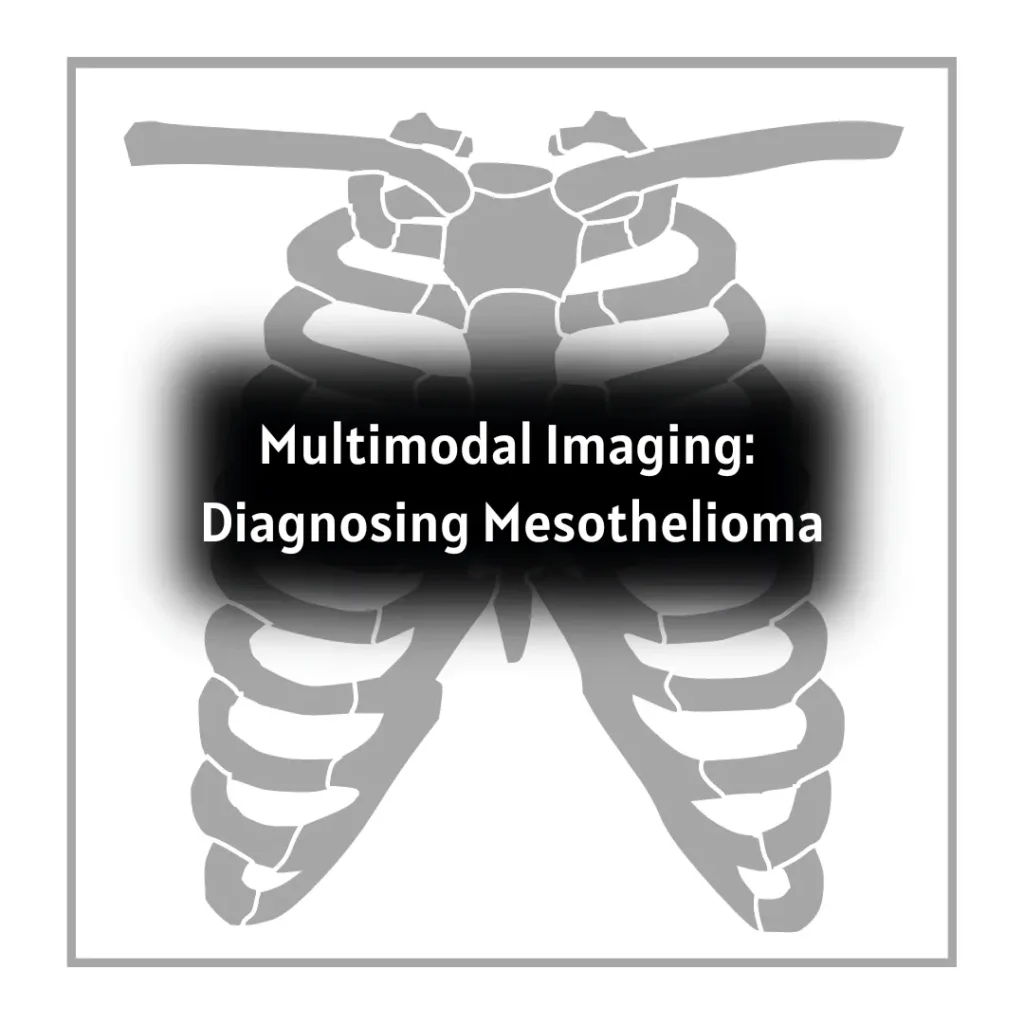Key takeaways: As of now, diagnosing mesothelioma can be done through a biopsy, or a sample
of living tissue. Multimodal imaging—which is the utilization of several imaging techniques for
diagnosis—might become a more commonplace practice, considering the invasive nature of
biopsies and the urgency of diagnosis. Some forms of multimodal imaging techniques include
chest x-rays, CT scans, PET scans, and MRIs.

How is Mesothelioma Diagnosed?
There isn’t a single way of diagnosing mesothelioma; rather, it often takes a multitude of
diagnostic measures for a definitive diagnosis. Because mesothelioma symptoms present in
advanced stages, it’s critical for doctors to proceed with urgency, a keen attention to detail, and
an esteeming of patient symptoms. Oftentimes, doctors use biological markers as proxies for
mesothelioma—for instance, certain immune system “red flags” or an irregular chest X-ray—but
the only surefire way to diagnose is through a biopsy, or a sample of living tissue. Currently,
visualization techniques do not suffice as diagnostic tools, especially because mesothelioma is
relatively rare (~3,000 new cases in the U.S. a year).
What is Multimodal Imaging?
Multimodal imaging refers to the ways that doctors non-invasively screen for mesothelioma, as
used in conjunction. Multimodal imaging is useful—more useful than a standalone imaging
technique—because they analyze different bodily systems, and therefore, different ways that
mesothelioma can manifest. A factor contributing to the difficulty of a mesothelioma diagnosis is
that mesothelioma tends to be heterogeneous in nature, i.e., different parts of the same tumor
look, behave, and grow differently. Multimodal imaging acts like a safety net for this
heterogeneity: if one technique doesn’t catch mesothelioma, then another technique is likely to.
Some Constituents of Multimodal Imaging Include:
Chest X-Rays are usually the first course of action, given their accessibility and ability to detect
masses in the lungs and surrounding tissues. X-rays do not differentiate between types of masses,
so there’s no way to discern whether a mass is fatty or cancerous, let alone malignant or benign.
CT scans are able to detect tumors in the chest wall, the instance of pleural effusions, or the
thickening of the pleura (membrane surrounding the lungs, which is affected by mesothelioma).
Thickening of pleura occurs in ~90% of mesothelioma patients, so this is another “proxy” of
diagnosis without biopsy certification. Plus, CT scans are more accurate than x-rays, as the chest
wall can be visualized without obstructions. This is an example of multimodal imaging: first
using an X-ray to establish the presence of masses, but pivoting to CT scans to visualize the type
and spread of the mass.
PET scans are a complement to CT scans, which initially visualized the thickening of the pleura.
PET scans can help doctors discern the cause of said thickening, which can be attributable to
factors beyond mesothelioma. Because of this, PET scans are about 89% effective in
differentiating between mesothelioma and other diseases.
MRIs are useful for their capacity to locate invasion of the chest wall, as well as create a 3D
reconstruction of the body’s tissues, bones, and organs.
Even though biopsy is the gold-star standard of mesothelioma diagnosis, multimodal imaging
(especially for patients with known asbestos exposure) can help decrease diagnosis time and
speed up the treatment process. Earlier diagnosis is associated with better patient outcomes and
increased prognosis, so establishing multimodal techniques as credible is important.
If you or a loved one has been diagnosed with mesothelioma, please call 1 (800)-505-6000 or fill
out our form. We are here to help you navigate the legal process of filing a claim to receive
compensation for your mesothelioma diagnosis. We help mesothelioma victims and their
families in Pennsylvania.
Sources:
https://www.ncbi.nlm.nih.gov/pmc/articles/PMC3256484/
https://pubmed.ncbi.nlm.nih.gov/25310424/
https://www.ncbi.nlm.nih.gov/pmc/articles/PMC6166151/
https://link.springer.com/article/10.1007/s11604-023-01480-5